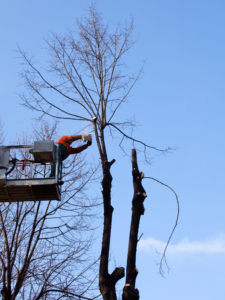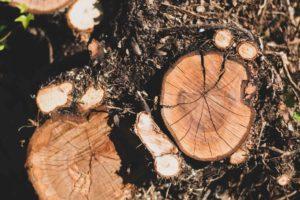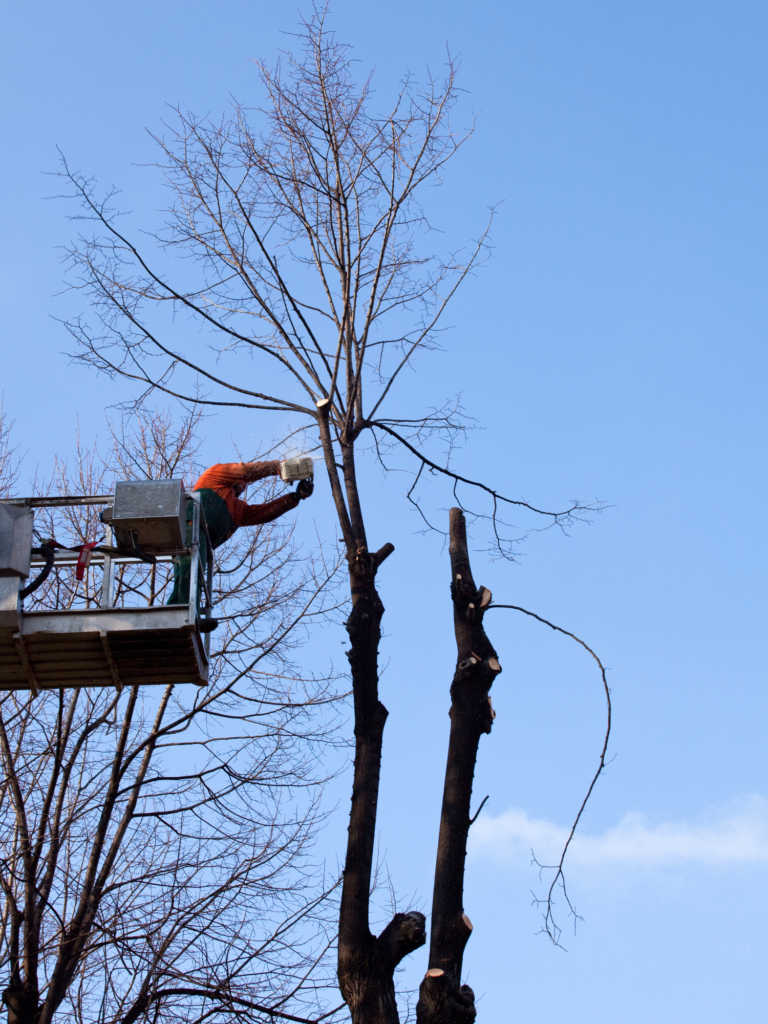Buying a home comes with enough surprises. Trees shouldn’t be one of them. A pre-purchase arborist inspection helps you understand safety risks, future maintenance, and permit issues that a standard home inspection may not address. If a big ash is dying, a maple straddles the lot line, or a mature oak meets London’s Distinctive Tree threshold, you want to know before you sign.
Why book an arborist before you waive conditions
Most home inspectors will note “tree close to roof” or “roots near foundation,” but they don’t perform formal tree risk assessments, identify regulated trees, or estimate removal/pruning costs with equipment access in mind. A dedicated arborist visit focuses on:
- Safety: deadwood over roofs and play areas, lean, cracks, cavities, and root defects.
- Health: pests/diseases common to Southwestern Ontario, crown dieback, poor pruning history.
- Infrastructure conflicts: service lines, sidewalks, driveways, retaining walls, and drainage.
- Compliance: whether a tree likely qualifies as Distinctive or sits in a Tree Protection Area—potential permit implications for future work.
A concise written pre-purchase report gives you photos, risk notes, and practical options (retain with pruning/cabling, monitor, or remove), so you can negotiate price, request seller remediation, or plan first-year budgets with clear eyes.
What a tree inspection includes (and how it differs from a home inspection)
You can expect a visual ground-level assessment of each significant tree, species ID, diameter measurements, site constraints (fences, grade, access), and a recommendations list prioritized by urgency (now / next 12 months / 12–36 months). Where risk is unclear, a TRAQ-qualified arborist may recommend a Level 2+ assessment (e.g., aerial check or advanced tools) consistent with ISA methodology. ISA Arbor
Why a Certified Arborist matters for home buyers
“Certified” isn’t just a nice-to-have—it’s a credential backed by the International Society of Arboriculture (ISA). ISA Certified Arborists meet experience/education requirements and pass an exam that covers tree biology, pruning, safety, and risk; you can verify someone’s status or find pros by city. For high-stakes purchases, that verification step protects you.
TRAQ: Understanding formal tree risk assessment
ISA TRAQ (Tree Risk Assessment Qualification) indicates specialized training in risk methodology—how to evaluate likelihood of failure, target, and consequences, then communicate options. For buyers, a TRAQ credential means clearer, defensible reasoning on whether to prune, support, or remove.
Want to keep learning? ISA’s Arborist News features practical articles on tree care and risk—helpful context as you review an inspection report.
By-laws, permits, and boundary trees in London
Not every tree on private property is freely removable. London’s Tree Protection By-law generally regulates the injury or destruction of trees ≥ 50 cm diameter within the Urban Growth Boundary and all trees in designated Tree Protection Areas. In plain terms, larger “Distinctive Trees” and trees in mapped protection areas often require a permit to remove or significantly injure. The City’s “Privately Owned Trees” page links to the forms and details.
Distinctive Trees and Tree Protection Areas—what triggers a permit
If you plan a future addition, driveway, or pool that would require heavy pruning or removal of a regulated tree, you may need City approval first. Your arborist can flag potential triggers and, if needed, prepare arborist reports that speak the City’s language. (Policy changes do occur; verify current thresholds and mapping at the time you apply.)
Boundary trees: who decides, who pays
Ontario treats most boundary trees—those with trunks across the property line—as co-owned. Injury or destruction typically needs consent from both owners under the Forestry Act. For a buyer, that means you can’t simply remove a boundary tree without neighbour agreement. An arborist report can help all parties weigh options and risk.
Costs you can avoid with a pre-purchase report
Tree work pricing varies with species, size, access, equipment, and disposal—but surprises often come from constraints you can spot before you buy. An inspection can surface:
- Crane or climber requirements for removals near structures.
- Tight access where small backyards or narrow side yards demand different equipment.
- Traffic control along busier streets, which can add crew hours/permits.
- Stump handling where future patios, driveways, or additions call for full extraction instead of grinding.
- Neighbour coordination for boundary trees, shared fences, or site access.
With this information, you can ask sellers for remedies (e.g., deadwood removal before closing), negotiate, or budget realistically—rather than inheriting urgent work in month one.
Typical “hidden” items that affect budgets after closing
- A tall silver maple with historic topping cuts and decay columns.
- Roots lifting a walkway that will need both root management and hardscape repair.
- An ash showing symptoms consistent with emerald ash borer decline.
- Multiple trees under power lines needing regular reduction cycles.
- An older yard where previous stump grinding left uncompacted chips under planned hardscape—best addressed before contractors arrive.
Quick steps: how to book, verify, and prepare
- Book a pre-purchase visit with a pro
Use a local team experienced with arborists London Ontario home-buyer inspections. Ask for a written scope with photos and prioritized actions. - Verify credentials
Use ISA’s Verify a Credential / Find an Arborist tools to confirm Certified Arborist status and any TRAQ qualification. - Share your plans
If you intend to add a pool, garage, or large patio, your arborist can evaluate feasibility and flag likely permit or neighbour-consent needs. - Clarify reports for the purchase
If you need documentation for a realtor, insurer, or lawyer, request a concise report with photos, risk levels, and recommended next steps. - Ask about rough costs
While a written quote may require a separate visit, your arborist can ballpark costs so you can decide whether to renegotiate or proceed.
What happens after you buy—locates, pruning, removals, stumps
Before any digging (new fence posts, stump extraction, drainage), Ontario requires a locate request through Ontario One Call. It’s free for homeowners; each utility responds and marks or clears the site. Keep the paperwork on-site until work is finished, and request a relocate if markings fade or expire.
From there, your arborist can:
- Prune for clearance, structure, and storm resilience following recognized standards.

- Support with cabling/bracing if appropriate.
- Remove trees that pose unacceptable risk (and advise on permits where applicable).
- Manage stumps—grinding for typical lawns, or full removal where you plan load-bearing hardscape.
Finally, plan replanting that fits the site (soil, space, clearances). A healthy, well-placed young tree often adds value and reduces future maintenance.
Next steps (CTA)
- Get a pre-purchase arborist inspection with Brockley Tree’s team: see our Arborist Services page for details.
- Questions about a specific address, or need a quick risk opinion during conditions? Contact us and we’ll help you decide the right level of assessment.
FAQs
Do I really need an arborist if I already have a home inspection?
Yes. Home inspections rarely include formal tree risk assessments, by-law triggers, or cost recommendations for pruning/removal. A dedicated arborist inspection fills that gap with actionable guidance tied to London’s rules.
How do I verify someone is a Certified Arborist?
Use ISA’s Find an Arborist or Verify a Credential tools and look for additional qualifications such as TRAQ for risk assessments.
What if a tree sits on the property line?
In Ontario, boundary trees are generally co-owned; removal or injury usually requires both owners’ consent under the Forestry Act. Your arborist can help document conditions and options.
Will I need a City permit to remove a tree after I move in?
You might—London regulates larger Distinctive Trees and trees in Tree Protection Areas. Your arborist can advise and prepare reports if needed. Always check current City guidance before you apply.
What should I read to understand tree care basics?
ISA’s Arborist News offers practical, peer-reviewed articles for property owners who want to learn more about maintenance and risk.

